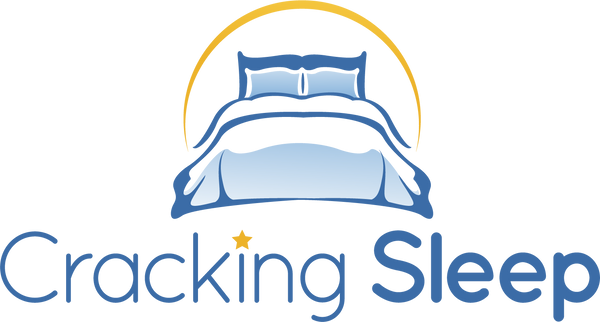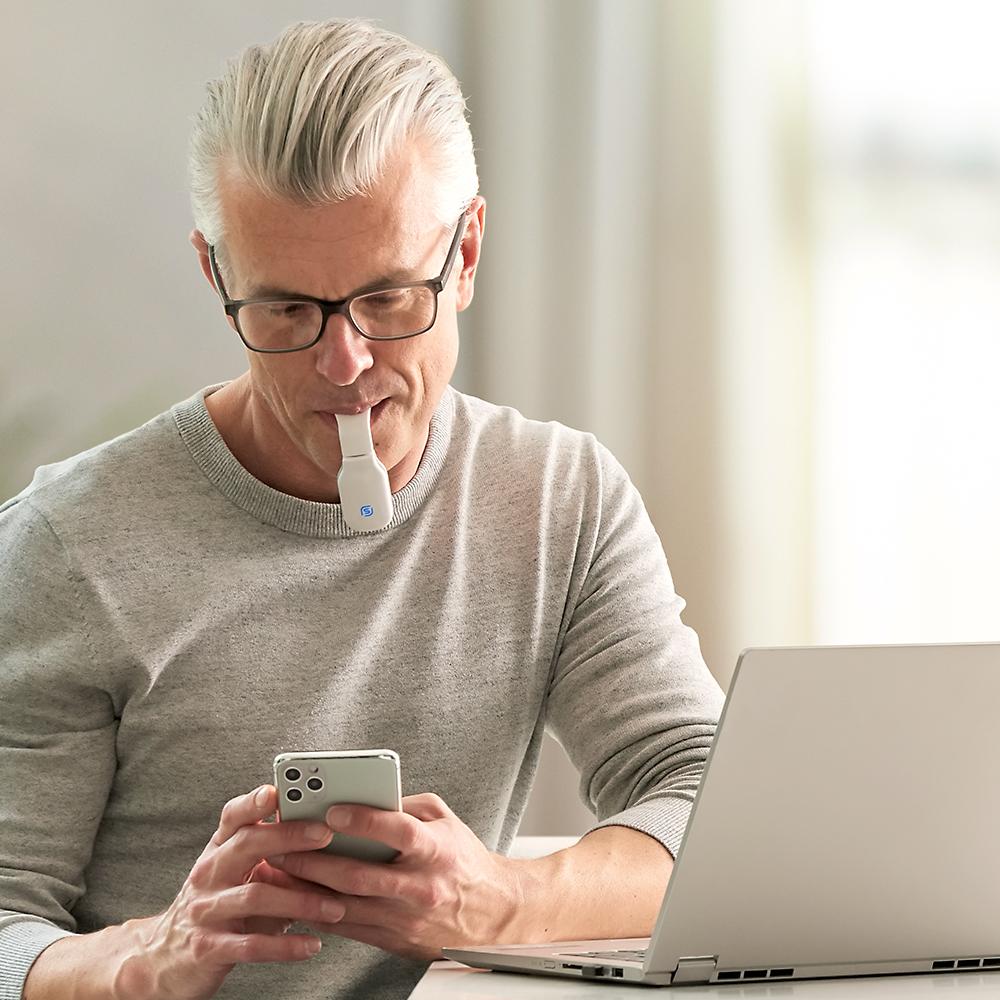Read time: 6 minutes
What’s inside?
- What is the eXciteOSA?
- But how does it work?
- Where’s the evidence it works?
- Is it worth it?
- Overall thoughts
- Would I try one?
Most people reading this will have some understanding of sleep apnea and its potential causes.
For those with mild sleep apnoea, the problem can be something as simple as their tongue going all floppy when they sleep and – as a result – temporarily blocking the airway.
For others, the issues can be further down the rabbit hole where we initially cannot see.
If you are in the first group there could be a treatment available for use during the day to help reduce apnea events at night.
Traditional treatments for sleep apnea, such as CPAP, mandibular advancement devices, and surgical interventions often come with challenges that lead to low adherence rates. For those of us on CPAP (or a BiPAP/APAP flavour) wearing that mask every night is something most of us get used to but we would still rather it wasn’t so.
What is the eXciteOSA?
At first glance the eXciteOSA appliance, produced by UK firm Signifier Medical Technologies, is just another app-based piece of tech.
But is that all there is to it?
Remember those late night TV adverts where the already healthy and fit 20-something model would strap-on some electro-pulsing gadget to their abs? Well, the idea there was for the gadget to stimulate the core muscles around the belly and… hey, presto!... you have a six-pack. Now, I don’t want to poo-poo something I never tried myself, but there are still plenty people in gyms working on those six-packs the old-fashioned way… so I’m steered towards treating such claims with caution.
From what I can garner, the eXciteOSA works on the same basis, but is this just another piece of techno junk or does it really have a place in your snoring or sleep apnea treatment?
You put the working device in your mouth for 20 minutes each day while awake and after 6-weeks the company claim you should notice a difference.
But how does it work?
The device is made up of 2-pieces… the mouthpiece itself and the hand-held controller it attaches to. That’s the physical part… then it connects to an app.
Inside the device are electrodes that, just like the six-pack builder, stimulate muscles… only this time it’s the muscles controlling your tongue.
The aim, and claim, is simple. In the company’s own words: ‘The world’s first clinically-proven daytime therapy for mild obstructive sleep apnea and primary snoring’.
At a very basic level, having a device you use for 20 minutes during the day, compared to strapping a wind-tunnel to your face for 8-hours each night, sounds like an attractive option – which could also improve user compliance… if it works.
The electrodes are supposed to deliver mild electrical stimulation to your tongue muscles. This stimulation, it is claimed, aims to improve muscle tone and responsiveness, thereby reducing the likelihood of airway collapse during sleep.
The initial 20-minutes a day for the first 6-weeks is kind of like a bootcamp for your tongue. Following graduation, the company claim you can move into maintenance mode and drop your workout sets from every day to twice a week in order to sustain muscle tone.
Where’s the evidence it works?
Okay… this is where the word-play becomes a little stretchy.
The term Clinical Evidence has been abused by probably every medical device and drug maker ever to exist and at first glance it appears the same here.
The company website makes these claims:
- 90% of users experienced a reduction in their snoring
- 89% of bed partners noticed a difference in snoring
- 78% of patients experienced reduction in observed sleep apnoea
All good and positive numbers, until you look at the number of patients studied.
The first 2 claims (90% and 89%) were based on a single study of 115 patients.
The 78% claim was based on a 2-night sleep study on only 65 patients.
It isn’t clear from the company’s info if there’s a cross-over of patients between these 2 studies but other claims of ‘nearly 150 patients’ and ‘over 140 patients’ would suggest there could be.
Digging around a bit in the medical research world it appears sample groups of a few hundred people are generally accepted as fair.
However, given around 20% of the world’s population has sleep apnea, a sample group of around 150 people just doesn’t seem enough to me. Especially when the base price for the device is into 4-figures.
Further studies appear to be ongoing to explore the long-term benefits and potential applications of the device across different patient groups. So, hopefully, we will get a clearer view soon.
Is it worth it?
There simply isn’t enough evidence around to say ‘Yes, go for it!’… however…
Depending on where you are in the world, you may be able to run a personal test at minimal cost. In the UK, the retail website offers a trial offer where you buy the product and try it for a few months. If you don’t see enough benefit to keep it, they will take it back and refund most of your money. I say ‘most’ as there’s some small print where they deduct a cost for the un-reusable mouthpiece… which seems fair enough.
Overall thoughts:
- Non-Invasive: Unlike CPAP masks and mandibular advancement devices, eXciteOSA is non-invasive and does not require wearing any equipment during sleep. This can significantly enhance patient comfort and compliance.
Given some US insurance companies will take-back equipment and stop funding due to non-compliance, this could be a huge benefit to some people.
- Daytime Use: The device is used during the day. Meaning, if it works for you, it could result in you doing away with your CPAP machine altogether.
- Improved Muscle Tone: If it does what it says on the tin, by strengthening the muscles of the tongue and upper airway, eXciteOSA addresses one of the root causes of sleep apnea. This could lead to long-term improvements in airway stability and reduced reliance on other treatments.
- Portable and Easy to Use: The handheld controller and mouthpiece seem compact and appear to be simple enough to use, making it convenient for patients to incorporate into their daily routine.
- Reduced Side Effects: Since the device does not involve continuous airflow or physical adjustments to the jaw, the potential for side effects compared to CPAP and mandibular devices.
- Uncertainty: Whether it actually works could be down to individual experiences. Although the industry seems to believe a few hundred patients are enough to represent one-fifth of the planet, I have my doubts.
If your sleep apnea is severe, it is unlikely this would be of any use to you anyway. However, if your issues are snoring or mild sleep apnea, this could be worth a try… especially if the cost was only for the mouthpiece used during your trial.
Would I try one?...
Well, I almost did. However, when I tried to buy one from the company’s UK website, they were out of stock. So… it appears interest could be high.
I will be looking again though. And when I do… I’ll let you know how I get on.
Should you choose to try the eXciteOSA, or you may already use one, please share your experiences with me at alan@crackingsleep.net. Your experience could help others to improve their sleep apnea or snoring problems.
Cheers,
Alan
P.S. I have taken to creating various bits on sleep and sleep apnea. If you would enjoy hearing more and find out where else you can find stuff like this, you can get my weekly Triple Whammy email, which has 3 short topics each week. Some written or recorded by me and others I’ve found out there in the strange world we live in.
If this is you, sign up here and you will get the very next one.
Image used is publicly available from the eXcite.com website.

